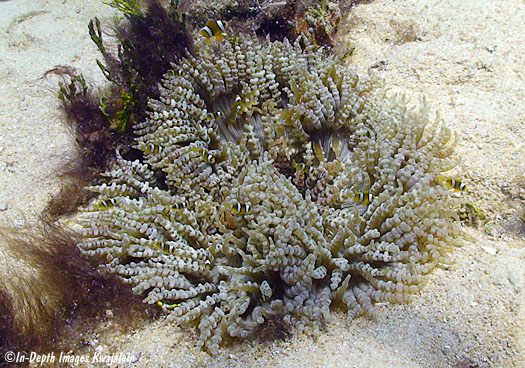
Heteractis aurora is a common sand dwelling anemone. Its base seems to usually be attached to a buried rock, and the anemone will retract completely under the sand when disturbed, leaving its symbiotic clownfish and shrimp milling around above the sand and probably subject to increased predation. These anemones usually host the symbiotic clownfish Amphiprion tricinctus, although possibly also young Amphiprion chrysopterus; figures in some references indicate that the young of the two species are difficult to tell apart.

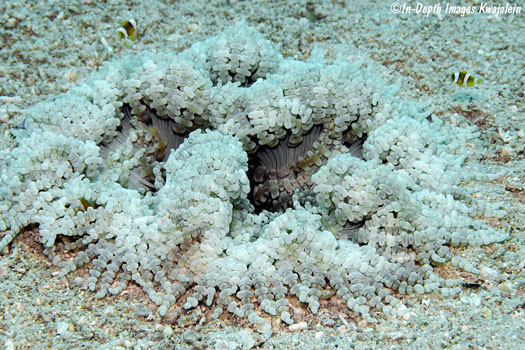
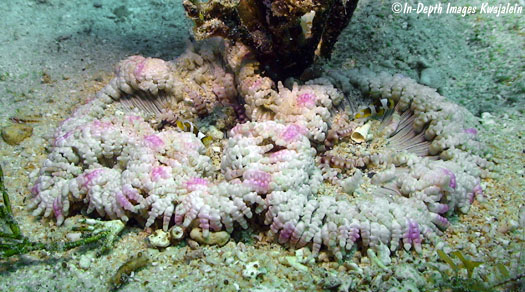

A small individual.




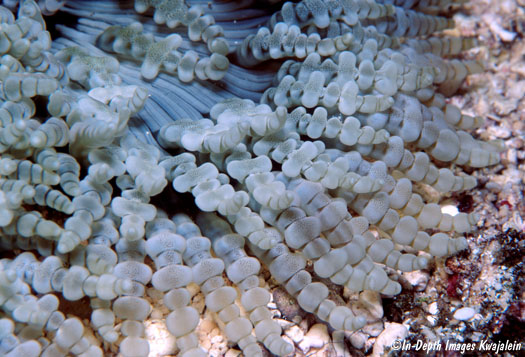




Heteractis aurora is subject to bleaching. When the water temperature gets too warm and stays that way for a period of time, the symbiotic single-celled algae that lives within anemone and coral tissue and generally gives the host its color is expelled, leaving the still living anemone or coral white. Why the corals lose their algae is still not fully understood, but one speculation is that higher temperatures increase oxygen production in the algae to toxic levels. In any case, the algae symbionts are required for long term survival of the corals and anemones. If the warm water does not last too long, the corals and anemones can be recolonized by the algae and continue to survive. If the bleaching lasts too long, the hosts die, probably by starvation. At Kwajalein, this bleaching happens when the water reaches 30°C (86°F). In all our years diving in the Marshalls, starting in the 1960s with some in the 70s and early 80s, and again from 1988 onward, we first witnessed widespread coral bleaching in 2009, the first time we recorded the water reaching 30°C. It happened again in 2013, 2014, 2016 and at least to a limited extent in 2017. Many corals and anemones have died in these repeated events. Clearly the ocean is getting warmer, and it is having a serious effect on coral reefs. Below show some examples of bleaching or fully bleached Heteractis aurora anemones.



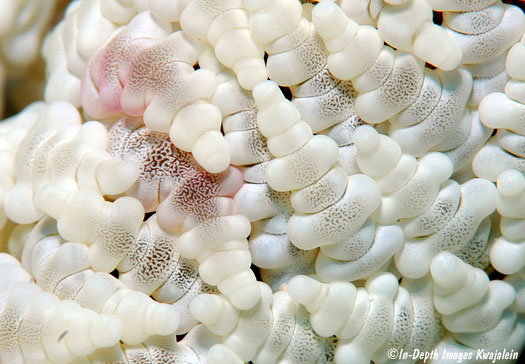
Created 27 July 2018